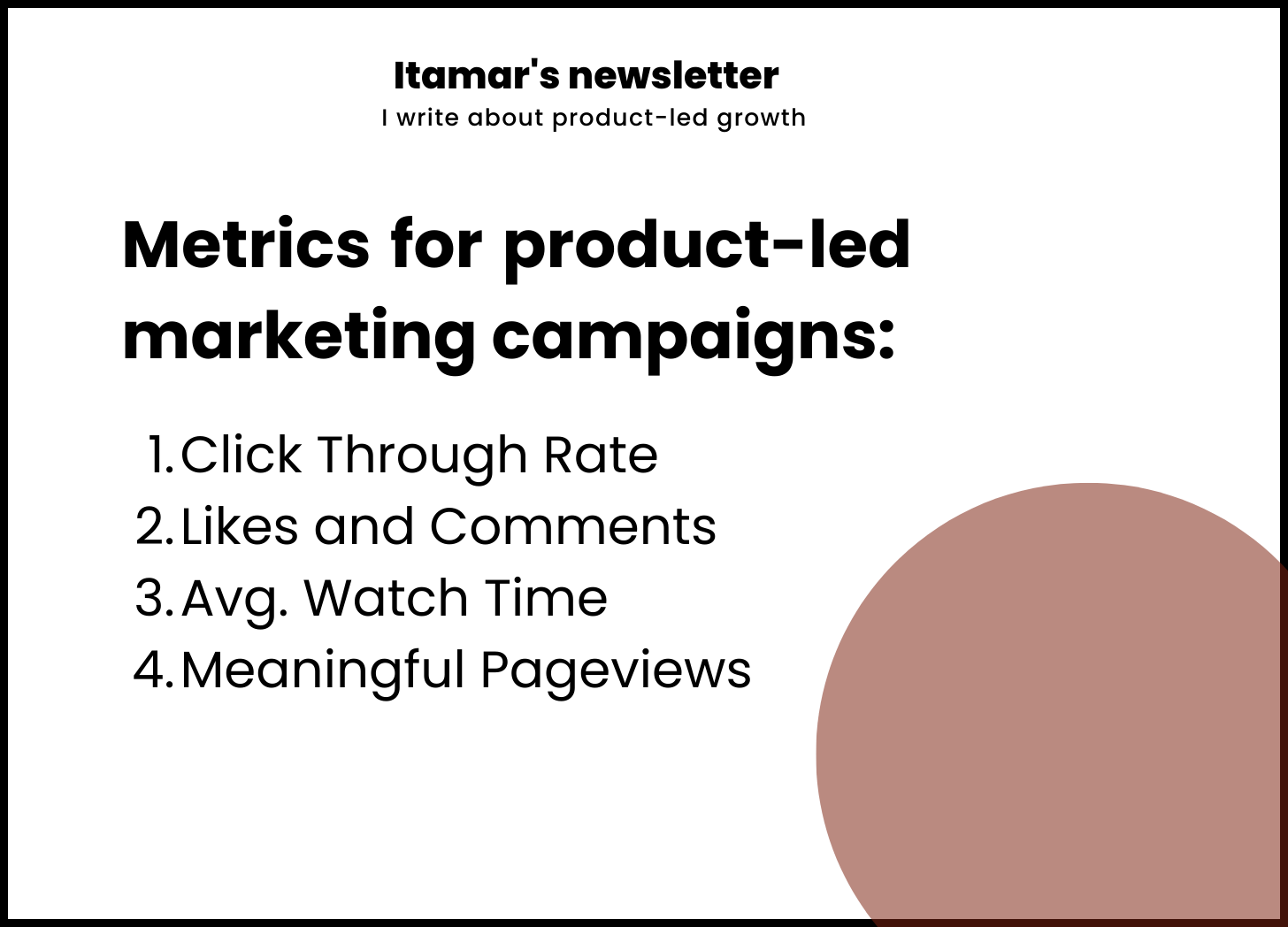Key metrics for product-led marketing campaigns
My latest post's bottom line was that your marketing campaigns should educate about your product, leveraging customer success stories, product tutorials, playgrounds, etc.
My experience is that this approach can be very fruitful and show results in several weeks: Boost in qualified signups, demo requests, opportunities, and ultimately revenue.
Yet, it can be difficult to measure.
When you’re doing classic lead generation campaigns (for demos or gated content), measurement is a piece of cake: Everything revolves around the Cost per Lead (CPL), and your goal as the demand gen guy is to create the campaign with the lowest CPL possible.
Simple.
Things are similarly simple when doing performance marketing in bottoms-up PLG companies. In that case, you optimize not for leads but for signups (or revenue, in companies with very short sales cycles): A good campaign is a campaign with a cheap Cost per Signup.
But you can't optimize for those metrics when you’re doing product-led marketing. Sure, at the end of the day, you expect people to sign up or book a demo, but that’s not your focus. You focus on getting the right people to consume as much of your content as possible.
That is more difficult to measure than cost per lead. Yet, it is not impossible. Here are several metrics I keep track of in all my product-led marketing campaigns:
Click Through Rate
CTR can be an extremely important metric, as long as:
You are working with a very well-specified audience.
For example, in Linkedin I like to work with two kind of audiences: One that is very broad (targeted by skills or functions) and one that is very specific (targeted by titles mostly).
CTR won’t be extremely significant for the broad audience (as I may be simply receiving a lot of irrelevant clicks) but it will be very significant with the specific audience.
Your ad clearly communicates the offering. It’s easy to generate high CTR with click baits, so make sure you don’t fall into that trap.
Likes and Comments
My experience is that engagement is highly correlated with performance even in purely performance ads. Yet, when tracking this metric, you must be sure your ads are product-focused. It’s very easy to generate engagement with general thought leadership and professional content, but doing so won’t convert users.
Avg. Watch Time
This is an important metric for videos consumed in-feed (such as 60-second testimonials) and for videos you embed in your website (such as tutorials). You should track how many users reach 75% of the video and optimize the campaigns accordingly.
Meaningful Pageviews
You shouldn’t use pageviews as a metric to measure your product-led ads performance; it’s simply not significant enough (a bounced page view is still considered a page view). Which is why I usually track meaningful page views: Views of two or more different pages in the website.
For developer-focused companies, I also suggest adding a separate conversion for a documentation pageview. Reading through the docs is a major intent signal.




